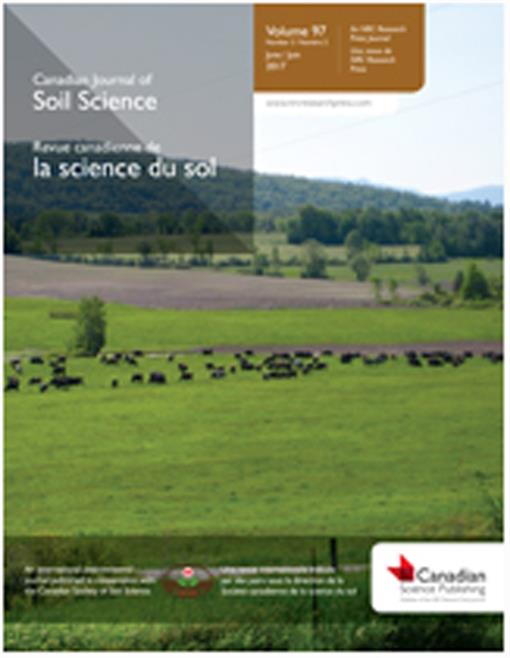Anaerobically digested dairy manure (AD) has been proposed as an alternative nitrogen source to reduce soil nitrous oxide (N2O) emissions compared with raw dairy manure (RM). The aim of this research was to compare soil N2O emissions associated with AD and RM according to three application methods: surface broadcasting (SB), incorporation (SBI), and injection (INJ). The field experiment was conducted on a loam soil at Elora, ON, from November 2012 to November 2014, using a randomized block design with four replications. Manure was applied in mid-November (fall), and corn (Zea mays) was planted in late-May of each year. Nitrous oxide flux was measured using nonsteady state chambers sampled weekly or bi-weekly. Cumulative N2O emissions were significantly affected by the interaction between source and method (F = 3.99, P < 0.01), with the highest value for surface broadcast AD (6.4 kg N2O-N ha-1) and the lowest value for injected AD (2.6 kg N2O-N ha-1). Manure source affected cumulative N2O emissions (F = 4.67, P < 0.1), with the largest emissions for AD (4.8 kg N2O-N ha-1). Anaerobically digested manure was proven to reduce cumulative N2O emissions when it was fall injected to corn in cold climates; however, if AD is broadcasted or broadcasted and incorporated, it may result in greater N2O emissions than those produced by RM.
BioOne.org will be down briefly for maintenance on 14 May 2025 between 18:00-22:00 Pacific Time US. We apologize for any inconvenience.
How to translate text using browser tools
16 March 2017
Anaerobically digested dairy manure as an alternative nitrogen source to mitigate nitrous oxide emissions in fall-fertilized corn
Gustavo Cambareri,
Claudia Wagner-Riddle,
Craig Drury,
John Lauzon,
William Salas
ACCESS THE FULL ARTICLE
It is not available for individual sale.
This article is only available to subscribers.
It is not available for individual sale.
It is not available for individual sale.
anaerobically digested manure
application automnale
corn
digestion anaérobie du fumier
fall application
maïs
method of application





